(VOVWORLD) - For the first time, 21 paintings by Emperor Ham Nghi will be revealed to the public. Starting Tuesday, the Kiên Trung Palace, a newly restored gem of Hue’s Imperial City, will host "Sky, Mountain, Water | Allusive Panorama," the largest retrospective ever dedicated to a hero of the resistance and an overlooked artist for over a century.
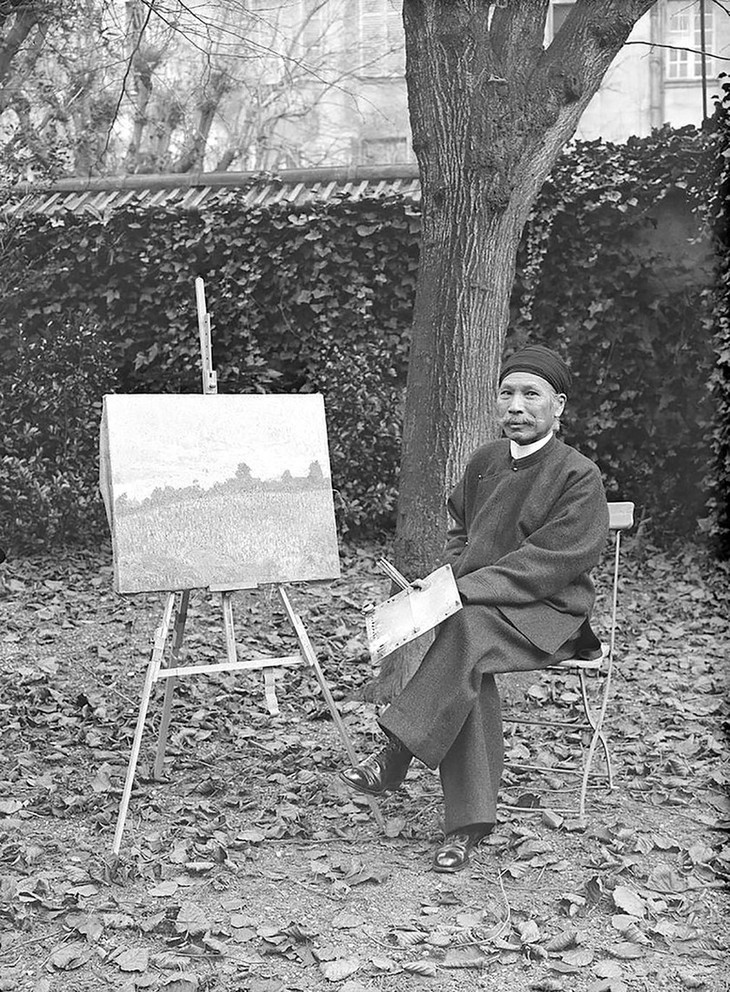 Emperor Ham Nghi Emperor Ham Nghi |
The exhibition, the first of its kind in Ham Nghi’s homeland of Hue, is co-curated by art researcher Ace Le and Amandine Dabat, PhD, who is the fifth generation descendant of Ham Nghi, an emperor of the Nguyen dynasty who reigned for only one year before being captured and exiled to Algeria because of his opposition to the French colonial rule. But before exploring this unprecedented exhibition, let’s take a look back at the journey of this sovereign.
Born in Hue in 1871, Ham Nghi became the eighth emperor of the Nguyen dynasty in 1884, at just 13 years old. The following year, after a failed uprising against French rule, he left the imperial city and issued the Can Vuong edict, calling for resistance to restore independence.
After three years of struggle, he was captured and exiled to Algeria in 1888. There, he sought solace in painting and sculpture. Ham Nghi passed away in Algiers, never having returned to Vietnam.
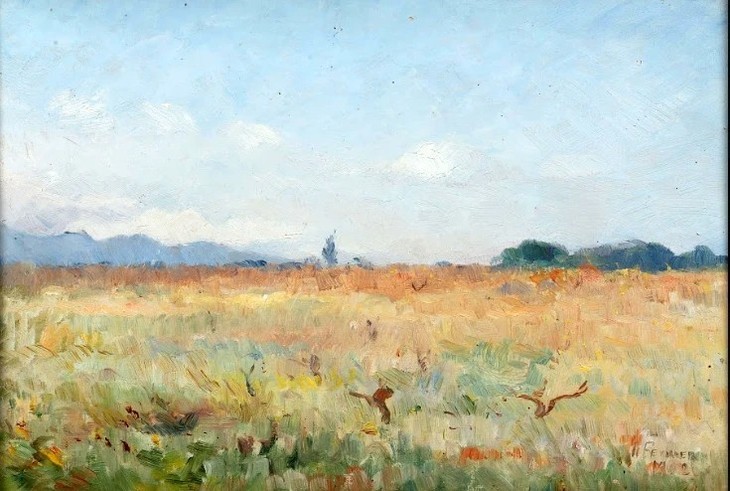 "Wheat Fields" (1913), 31 x 39 cm, oil on canvas.(Credit: Lynda Trouvé). "Wheat Fields" (1913), 31 x 39 cm, oil on canvas.(Credit: Lynda Trouvé). |
To be held over two weeks, this exhibition provides a rare opportunity to discover the artistic side of a sovereign primarily known for his role in the anti-colonial resistance. This lack of recognition is due to the unique circumstances of his life, as highlighted by Amandine Dabat, also the author of the book, titled Ham Nghi – Empereur en exil, artiste à Alger (Ham Nghi: Emperor in Exile – Artist in Algiers) based on her doctoral thesis about the emperor's artistic career.
"Ham Nghi is known as a resistant emperor, a patriotic emperor, a national hero. But he is far less known as an artist. This is mainly because he was trained in art during his exile. Another reason for this obscurity is that he was regarded throughout his life as a political prisoner, constantly monitored by the French. Instead of embracing this status, he chose to become an artist and kept his art private," said Dabat.
During his exile in Algeria, Ham Nghi was trained in art by French artists. He found in art both a refuge and a form of inner freedom.
"Painter Marius Renaud provided him with lessons modeled on the curriculum of the École des Beaux-Arts in Paris, including drawing and painting courses. He also studied sculpture under Auguste Rodin starting in 1899. From 1893 onwards, he was allowed to travel to France every two years for medical treatments, and during these trips, he visited Paris and met other artists," said Dabat.
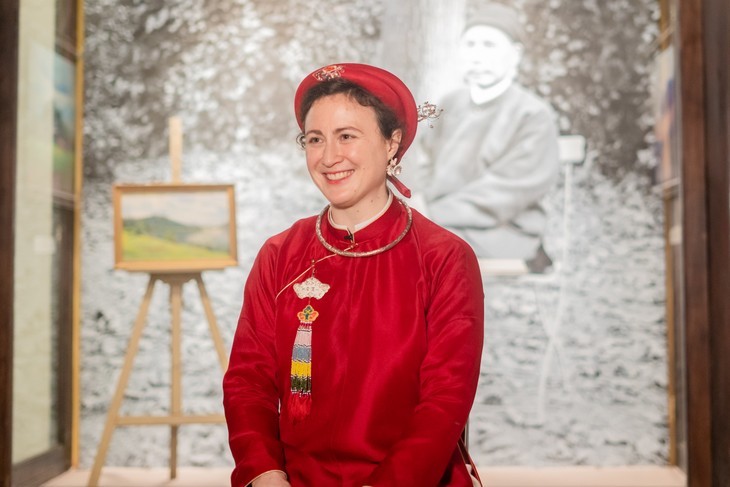 Amandine Dabat, PhD, the fifth generation descendant of Emperor Ham Nghi. (Photo: Art Republik Vietnam) Amandine Dabat, PhD, the fifth generation descendant of Emperor Ham Nghi. (Photo: Art Republik Vietnam) |
She added that Ham Nghi's artistic style was heavily influenced by the French. Like Vietnamese scholars, he chose masters from the Impressionist and Post-Impressionist movements. He drew significant inspiration from Claude Monet and Gauguin, producing deeply personal works that still reflect French artistic influences.
Are Ham Nghi’s works inspired by Vietnamese art? According to his descendant Amandine Dabat, the answer is no.
"It is difficult to say that Ham Nghi’s work contains Vietnamese artistic influences because he was the first modern Vietnamese artist trained by the French. He himself was not exposed to Vietnamese art until the end of his life," said Dabat.
Although there is no direct Vietnamese artistic influence, Ham Nghi’s works are deeply imbued with nostalgia for his homeland.
"However, we can find inspiration in the memories he retained of his native land—especially its landscapes and nature. Painting was a way for him to express his emotions. When he painted, he was alone with himself, free from surveillance, immersed in nature. He could both admire its beauty and convey through his art his love for his country and the suffering of having been forcibly taken from it. His paintings clearly reflect his sense of exile and longing for Vietnam," said Dabat.
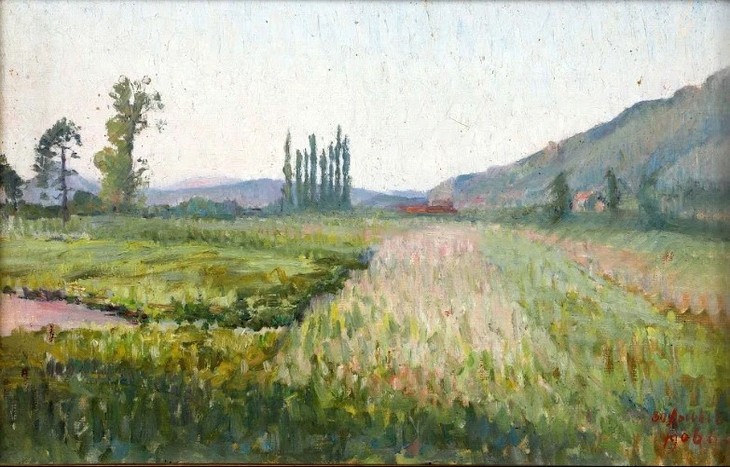 Landscape with Cypresses (Menthon-Saint-Bernard), (1906), 27 x 40.5 cm, oil on canvas (Credit: Kâ-Mondo) Landscape with Cypresses (Menthon-Saint-Bernard), (1906), 27 x 40.5 cm, oil on canvas (Credit: Kâ-Mondo) |
The 21 oil paintings on display come mainly from the collection of French officer Henri Aubé, a friend of the emperor, and were acquired by Vietnamese collectors at auctions in Paris in recent years. This is the first time these works are being exhibited.
The organization of this exhibition posed a significant challenge, as Ace Le explained. "From the planning phase, we worked at a fast pace, preparing everything in just over a year. Knowing that the project was non-profit, all partners offered their full support, making the process much smoother. Nearly ten collectors from across Vietnam lent artworks, mobilizing significant resources. They collaborated with top restoration experts and searched for period-appropriate frames."
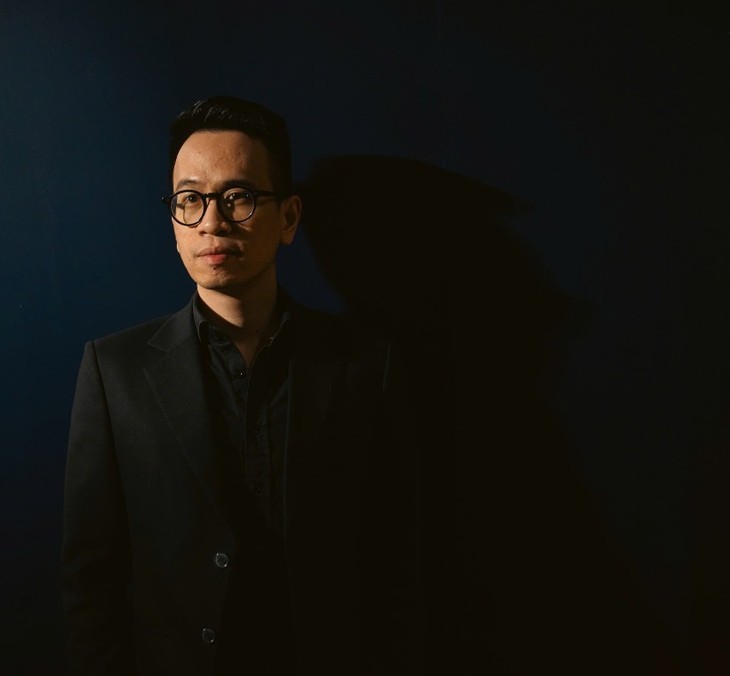 ACE Le, art researcher and editor-in-chief of Art Republik Vietnam. ACE Le, art researcher and editor-in-chief of Art Republik Vietnam.
(Photo: Art Republik Vietnam) |
The curator also emphasized the difficulty of gathering works that represent Ham Nghi’s entire artistic career
"Most of the paintings available are those he created in France, while he spent most of his exile in Algeria. To provide a complete picture of his artistic journey, I struggled to find works made in Africa. Fortunately, I discovered three, belonging to different collectors. Among them, ‘View of the El Biar Residence’ stands out. Under the Algerian sun, Ham Nghi painted his residence from a field, featuring a large tree in the foreground—a recurring element in his work. The brown tones capture the brilliant light, while the tree casts a calming shadow, its branches seeming to shield the Villa des Pins. This painting was gifted by his daughter, Princess Nhu Ly, to his assistant," said Le.
 (Poster) (Poster) |
Hoang Viet Trung, director of the Hue Monuments Conservation Centre, said the exhibition will help preserve and promote the nation's cultural identity and will also help younger generations better understand the country's history and culture, thereby raising awareness of the preservation and promotion of heritage.
For the first time, the people of Hue can admire the works of their emperor in his homeland—allowing the exiled sovereign to symbolically return home.
Beyond simply showcasing the works, visitors will have the opportunity to engage with curators and experts to better understand the process of repatriation and exhibition creation.
Amandine Dabat will be present to offer deeper insights into the emperor’s life and creative journey. Additionally, the French Institute of Hanoi will host a seminar on the exhibition.